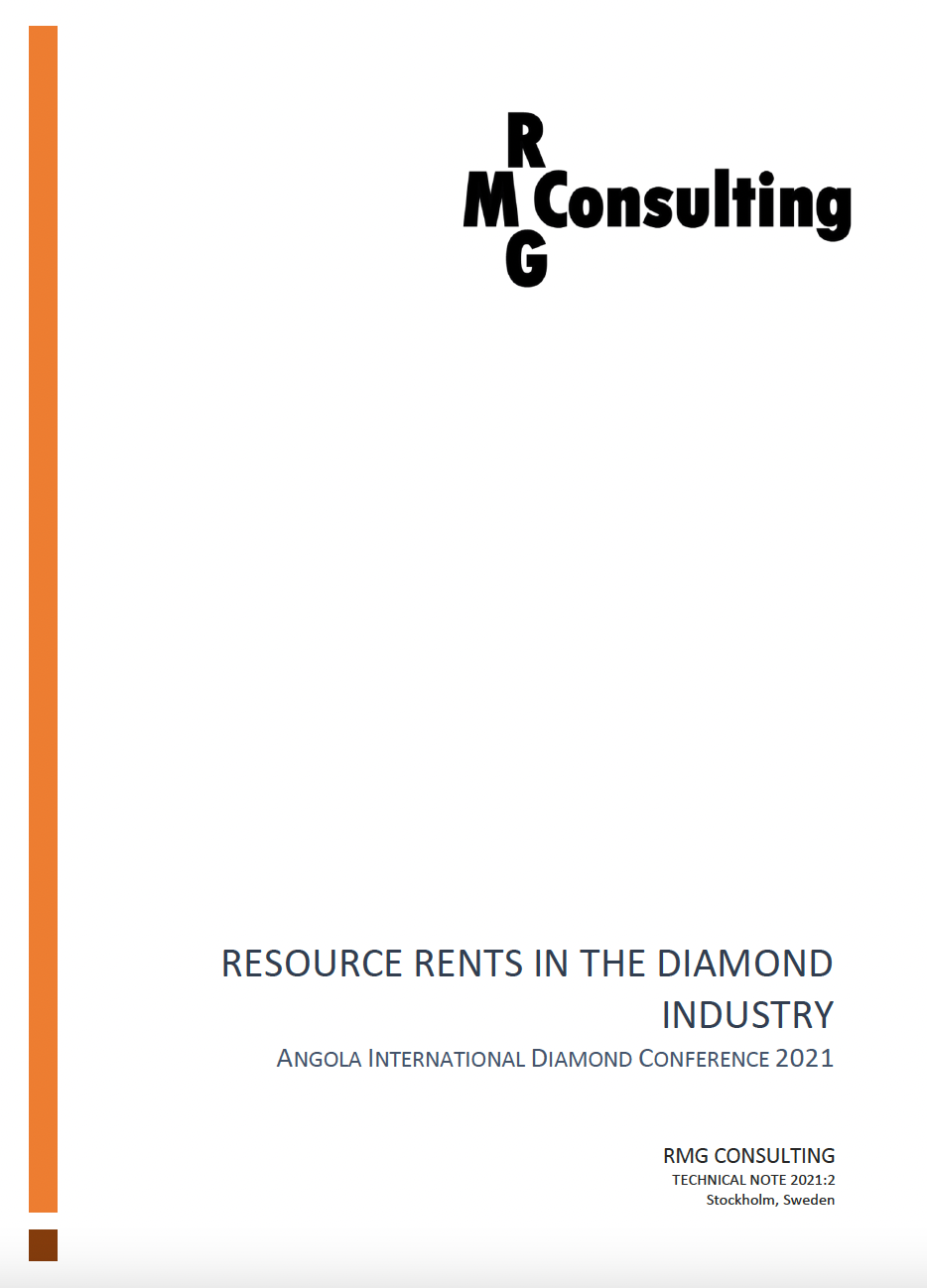RMG Consulting 2021
Resource rents in the diamond sector
RMG Consulting (2021) Technical note 2021:2
This technical note was prepared by Anton Löf of RMG Consulting for the first Angola International Diamond Conference (https://aidc2021.com/) held in Saurimo Angola on the 25-26 of November 2021 where Anton Löf presented it as the keynote presentation. It takes as its starting point the report Resource rents in the diamond industry 2014–19: Rents, issues, methods, and data availability (Löf et al. 2021) researched and written by RMG Consulting for UNU-WIDER (United Nations University – World Institute for Development Economics Research). Where possible figures have been updated to reflect the latest developments in the diamond industry.
The paper discusses the resource rents in the diamond industry 2010-2019. The diamond mining industry represents a relatively small part of the extractive industry; however, it is very important for certain emerging economies. Economic rent can be defined as: Economic rent = total income - total costs. Depending on whether resource rents are analysed in the short run or over a long run period they will display different characteristics. In the short run resource rents can be very high, while they can disappear completely in the long run. In the long-term all costs should be included when calculating a sustainable rent, the pure rent. In the mining industry these would include operating costs, cost of capital, exploration costs, overhead costs, and closure costs.
In conclusion, only pure rent can be taxed without changing the economic behaviour of an investor. Thus, to ensure continuous investments into the industry and a continuous production flow it is important not to over-estimate the rent – or the taxable space – and levy to high taxes. Companies need to make a profit, but it is also important to keep in mind that mineral wealth under most jurisdictions belong to the state/ country/ people. Governments hence have the responsibility to make sure that an optimal part of the rent created by its national mineral patrimony is returned to the state through a royalty and other taxes.
RMG Consulting 2021
Mining and metals – a power base for all nations
RMG Consulting (2021) Technical note 2021:1
This review of long-term metal production trends is an updated and expanded summary of Magnus Ericsson's chapter in Mineral processing and extractive metallurgy – 100 years of innovation, Corby Andersson, Richard Dunne and John Uhrie editors, Society for Mining, Metallurgy & Exploration (SME) Colorado 2014.
The paper discusses the locus of mining and its past, present and future. Over the past one hundred and fifty years a succession of countries has built their strength on mining and metals. Europe dominated global metals production in the mid-19th century. During the second half of the 19th century the USA gradually expanded its production of steel, copper and other metals and became the leading metal producing country. More recently a host of countries take part in the global production of minerals and metals. Australia, Canada, Chile, Brazil, Peru, DRC, South Africa and Zambia as well as China has increased their production and importance as mining countries.


